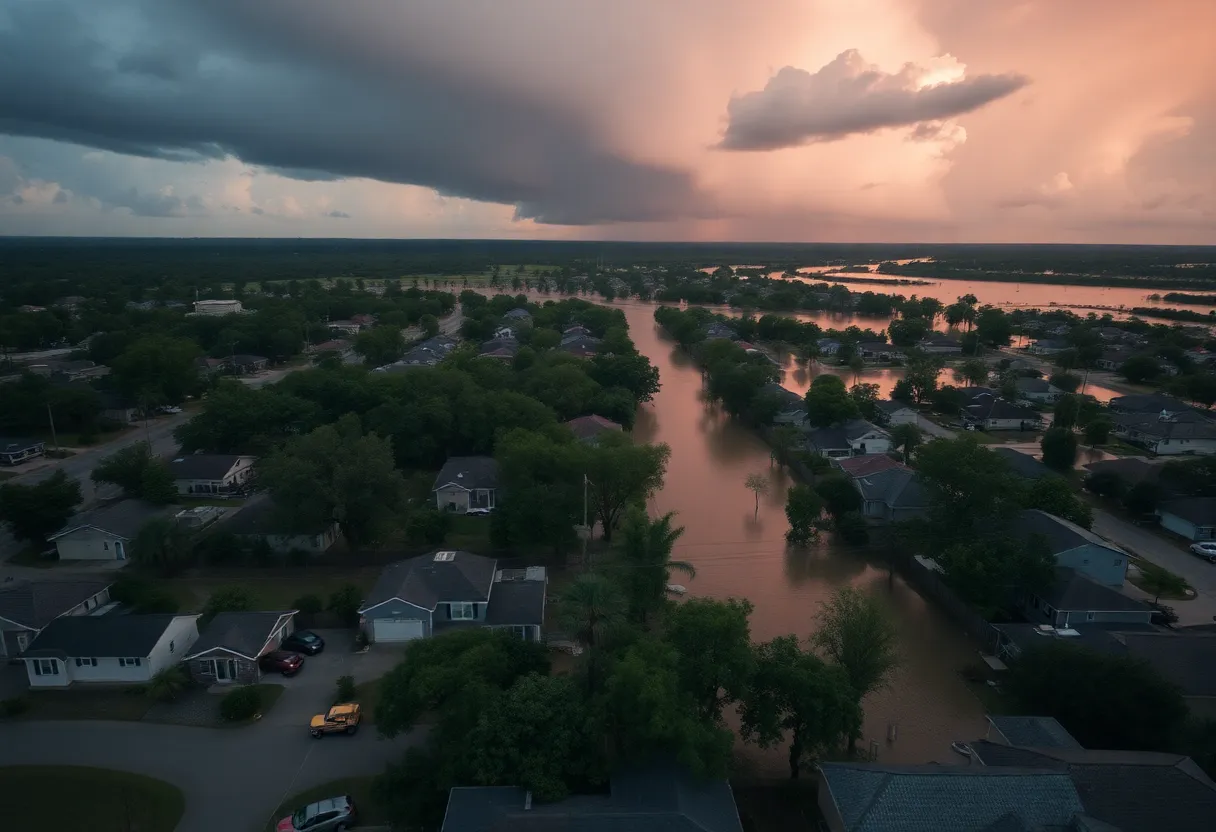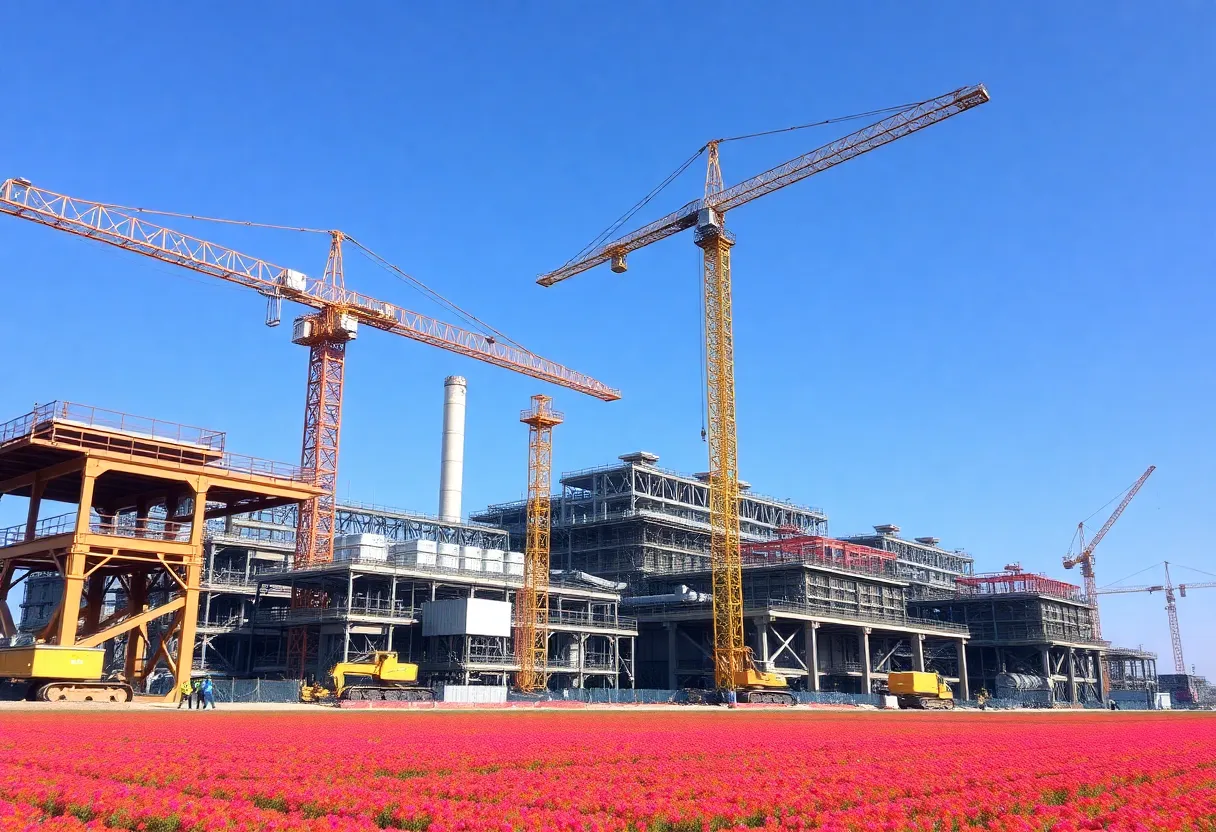News Summary
Central Texas experienced devastating flooding over the weekend, resulting in 161 people missing and 110 confirmed dead. The disaster overwhelmed emergency systems and raised critical questions about the readiness of the state’s insurance sector amid rising extreme weather risks. Experts advocate for improved preparedness and construction practices to combat future natural disasters. Additionally, the political landscape complicates the insurance market, while technological advancements offer some hope for navigating the challenges ahead. Homeowners face risks from inadequate protections and fraud after disasters, emphasizing the urgency for a unified approach in addressing these issues.
Texas is facing a crisis following catastrophic flooding that occurred over the weekend, which has left at least 161 people missing and resulted in a death toll of at least 110. The severe flooding has overwhelmed emergency systems and prompted renewed scrutiny of the state’s insurance sector, highlighting the urgent need for reassessment of existing practices as extreme weather events become more frequent.
The flooding has raised significant questions about the effectiveness of weather forecasting and emergency responses. Reports indicate that key positions at local National Weather Service (NWS) offices were vacant when the storm intensified, leading to criticism from Texas officials who believe that the NWS significantly underestimated the rainfall amounts. However, former staff members suggest that the core issue lies in the shortage of experienced professionals capable of handling extreme weather situations.
In light of the recent floods, experts are calling for more intelligent preparations and better construction practices to adapt to the increasingly severe weather that Texans are experiencing. According to the Executive Director of the Insurance Council of Texas, these changes are necessary to mitigate the impact of disastrous weather conditions.
Texas has seen a rise in extreme weather events, with regions like Dallas-Fort Worth frequently facing severe incidents such as hail and tornadoes. This trend illustrates the necessity for insurers to revisit their underwriting strategies, exposure maps, and coverage designs. As a result, the insurance industry is under pressure to adapt in a volatile market where traditional practices may no longer be sufficient.
The Texas Windstorm Insurance Association (TWIA) plays a critical role in the market, as it covers nearly half of the wind and hail policies available, with private insurers handling the remainder. Despite facing severe losses from recent flooding events, Texas has so far avoided the mass exit of major insurers that has affected states like Florida, California, and Louisiana. In fact, around 10 to 11 new property and casualty (P&C) carriers entered the Texas market last year, demonstrating some stability, albeit a fragile one.
The insurance market’s stability is further threatened by political decisions that could lead to major implications if rates are lowered without considering the solvency of companies. Texas has regulatory measures designed to ensure that rates are justified and non-discriminatory; nonetheless, inadequate disaster mitigation efforts continue to pose a significant risk. Notably, the state lacks a statewide law governing post-disaster contractors, leaving homeowners vulnerable to fraud.
Additionally, failed legislation aimed at subsidizing roof retrofits highlights the gaps in protective measures for homes following storms. Efforts to enhance competitiveness in the industry are underway, with insurers increasingly adopting technology such as artificial intelligence for pricing strategies and automated claims processing. However, these systems require careful oversight to avoid potential discrimination against policyholders.
The ramifications of the recent flooding has revealed vulnerabilities in Texas’s infrastructure and human resources, underscoring the essential need for comprehensive emergency planning and coordination. Experts have called for enhanced regulatory leadership that prioritizes both consumer protection and market stability, an approach that is vital for the sustainability of insurance practices in the state.
As severe weather threats loom, a robust response from lawmakers, regulators, and insurance companies is fundamental to building resilience in Texas communities. Homeowners are advised to take proactive steps in understanding their flood risk, including considering supplementary flood insurance, even if they do not live in designated flood zones. The discrepancies between FEMA’s estimates of flood risk and those from other data providers reinforce the importance of homeowners assessing their own risk levels.
Inadequate insurance coverage following disaster events can lead to severe economic implications and can hinder recovery efforts. Insurance remains a critical defense against the financial devastation that can result from severe weather. As Texas continues to face challenges posed by climate change and worsening weather patterns, a collective effort to address these issues becomes increasingly crucial.
Deeper Dive: News & Info About This Topic
- NBC News: Texas Flooding
- Wikipedia: Flood Insurance
- Realtor.com: Texas Flood Insurance Claims
- Google Search: Texas Floods Insurance
- Dallas News: Weather and Flood Insurance
- Google Scholar: Texas Flood Risk
- Austin American-Statesman: Filing Flood Claims
- Encyclopedia Britannica: Weather
- USA Today: Risks of Texas Floods
- Google News: Texas Flooding
Author: STAFF HERE GEORGETOWN
The GEORGETOWN STAFF WRITER represents the experienced team at HEREgeorgetown.com, your go-to source for actionable local news and information in Georgetown, Williamson County, and beyond. Specializing in "news you can use," we cover essential topics like product reviews for personal and business needs, local business directories, politics, real estate trends, neighborhood insights, and state news affecting the area—with deep expertise drawn from years of dedicated reporting and strong community input, including local press releases and business updates. We deliver top reporting on high-value events such as the Red Poppy Festival, Georgetown Swirl, and Christmas Stroll. Our coverage extends to key organizations like the Georgetown Chamber of Commerce and the Downtown Georgetown Association, plus leading businesses in manufacturing and tourism that power the local economy such as local wineries and historic downtown shops. As part of the broader HERE network, including HEREaustin.com, HEREcollegestation.com, HEREdallas.com, HEREhouston.com, HEREgeorgetown.com, and HEREsanantonio.com, we provide comprehensive, credible insights into Texas's dynamic landscape.






